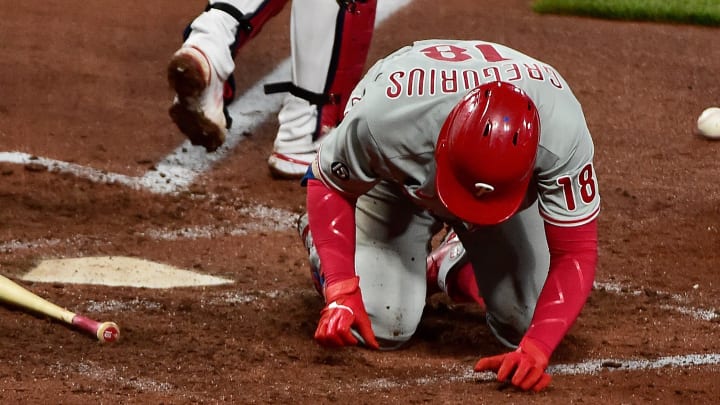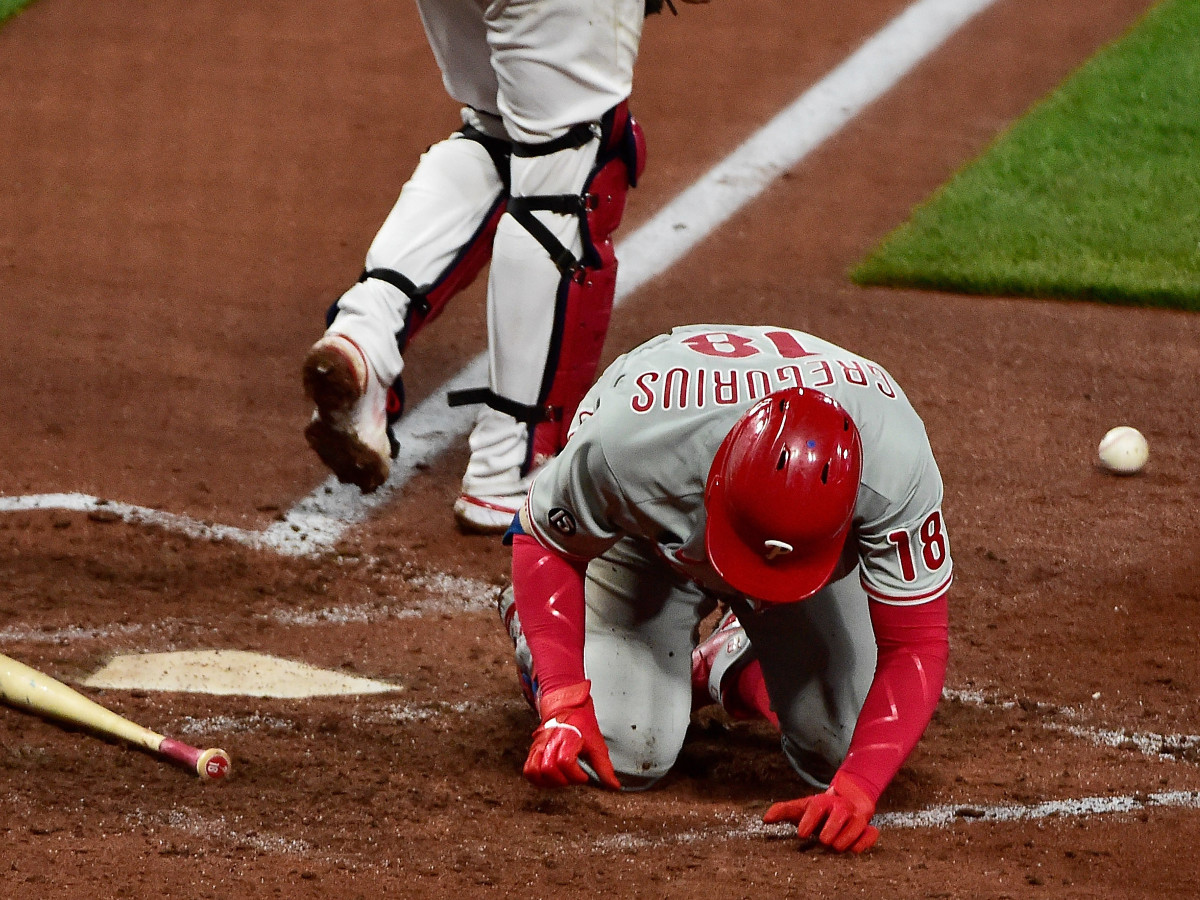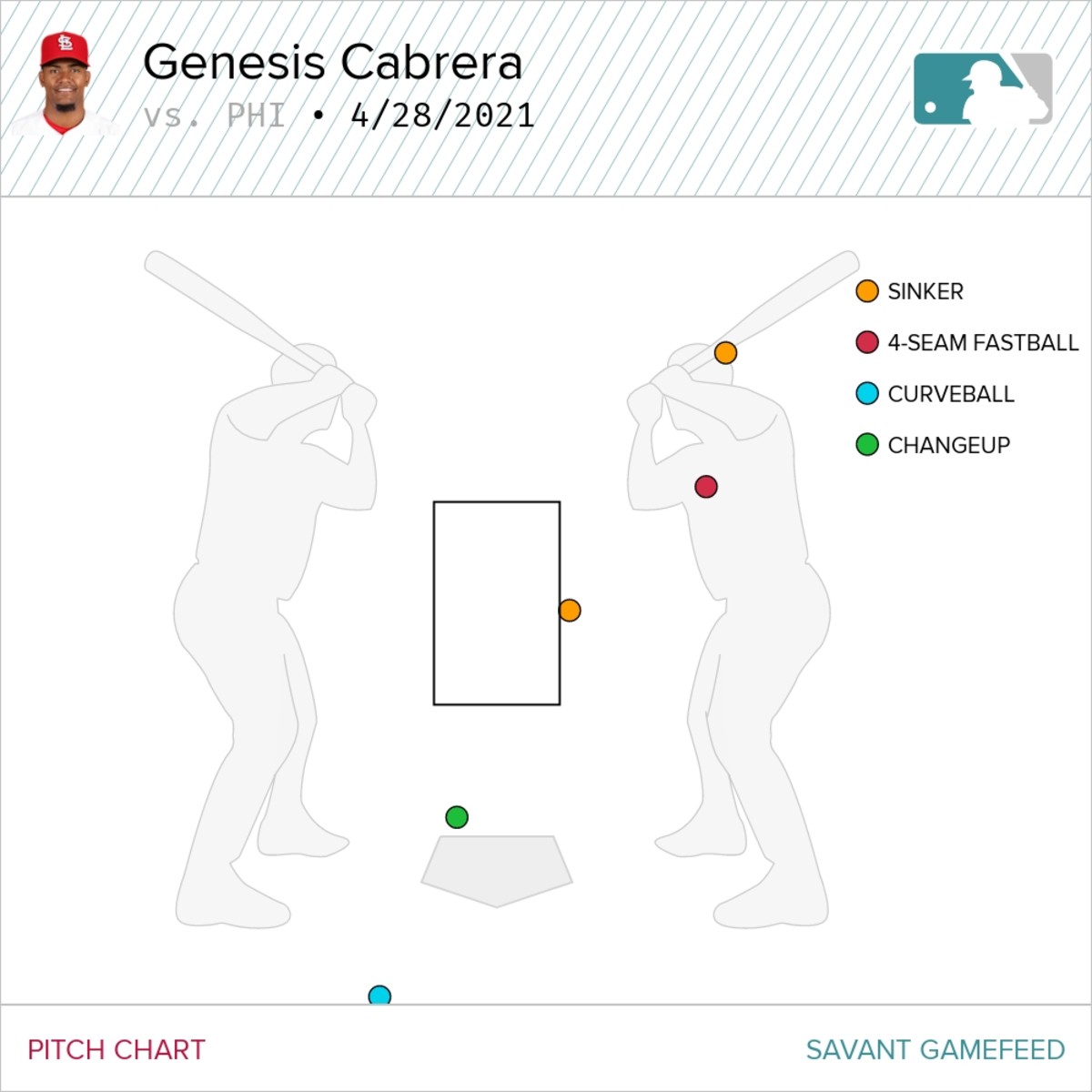After Dangerous Situation in St. Louis, MLB Must Amend the Three-Batter Minimum Rule

The three-batter minimum rule was controversial when it was first instituted before the 2020 season. It wasn't until Wednesday night that we saw its most dangerous consequences play out in St. Louis.
The Cardinals called on lefthander Génesis Cabrera to face Bryce Harper, who was leading off the sixth inning for the Phillies in a 3–3 game. Cabrera unleashed his first pitch, a 96.9 mph sinker, and drilled Harper square in the face, sending the superstar to the ground, cutting his nose and ending his night. Harper stood up on his own and walked directly to the clubhouse.
Fortunately, Harper wasn't seriously hurt. "Everything came back good, CT, all that kinda stuff," he said in a video he posted to Instagram after the game. "Face is still there, so we're all good."
Cabrera took a few moments to collect himself, then returned to the rubber and promptly nailed the next batter, shortstop Didi Gregorius, in the back with a 94.5 mph heater.
Two pitches. Two hit batsmen. And one erratic pitcher who had no idea where the ball was going.

The umpires congregated and then issued warnings to both dugouts. Phillies manager Joe Girardi—justifiably—lost it. As he argued with the umpires, Girardi pointed at Cabrera and made the motion to eject him. Naturally, this only got Girardi tossed. Cabrera wasn't going anywhere. After all, he had one more batter to face. Fortunately, he did not hit Andrew McCutchen, who singled home Matt Joyce, the pinch runner for Harper.
"If a guy hits a guy in the face and a guy in the ribs with two pitches, he’s got to go, right?" Girardi told reporters after the game. "If you’re really protecting the players, obviously, he doesn’t have command. He’s got to go."
Let's be clear. Cabrera wasn't trying to hit Harper and Gregorius. No pitcher is going to put the first two batters on in a tight ballgame just for the heck of it. These teams do not have a history of bad blood.
But also understand this shouldn't happen. In any season ever up until 2020, Cardinals manager Mike Shildt would've just brought in a reliever for Cabrera, whose command was so bad it wouldn't have shocked anyone had his next pitch hit the Durham Bull. In fact, Shildt told reporters after the game that he would've pulled Cabrera immediately after he hit Harper if it were allowed.

Except, MLB mandates that any pitcher face a minimum of three batters or complete an inning before he can be removed from the game—unless he is injured or ejected. Cabrera wasn't hurt, just wild. And the umpires weren't going to eject him for being bad, no matter Girardi's protests.
In youth baseball leagues across the country, there are rules in place for situations such as these. A pitcher must come out of the game if he hits two batters in the same inning or three in a game. It's not a form of punishment but one of protection. Of course, that's Little League; pitchers aren't exactly expected to throw strikes. But they also aren't hurling 95-mph projectiles in the direction of an opposing hitter standing 60 feet away.
When it implemented the three-batter minimum, MLB wanted to speed up games by limiting mid-inning pitching changes (though the rule has not improved baseball's pace of play). Plenty of people hated the idea at the time, though most of the pushback to the rule change either related to its limiting strategy—no more bringing in a lefty reliever just to face a left-handed hitter—or limiting jobs for specialist pitchers. Some people within the game worried that managers would have to stick with a pitcher who clearly couldn't throw strikes for three batters—and thus dragging the game out—instead of bringing in someone else who could throw the ball over the plate and speed things along.
The league surely wasn't considering what happened Wednesday in St. Louis as a possible negative consequence. It is hardly common that a pitcher's first two pitches hit opposing batters, though remarkably, it has happened twice this season. Marlins righthander Adam Cimber hit the first two Braves he faced to begin the ninth inning on April 12, though he recovered to get out of the inning without allowing a run. Had Cabrera's night ended after facing Harper and Gregorius, he would've been the first pitcher since at least 1901 to throw only two pitches and hit batters with each of them.
"That’s a failure of the three-batter minimum," Shildt said. "It absolutely is that. Completely, absolutely, no doubt. But that’s an outlier of it."
This isn't something anyone expects to happen. But, now that it has, the league must address it. If the three-batter minimum is here to stay—and there's no indication that it's going anywhere—the league must revise it to include some sort of common sense provision that can override it, at the umpire crew chief's discretion. So, if this were to happen again, after the second batter was hit, and especially after the first pitch forced the previous batter to leave the game with an injury, the crew chief could force the pitcher to be removed from the game. Call it a safety ejection. The pitcher and his team would not be disciplined. The game would continue with a new reliever in the game, and he would be allowed as much time as needed to warm up, as is the case when a pitcher leaves with an injury.
MLB can certainly be forgiven for not seeing this coming. Harper says he's fine, and Gregorius stayed in the game. But the league now knows something like this can happen. Amending the three-batter rule will help ensure something worse doesn't happen next time.
More MLB:
• Byron Buxton's Breakout Season Is Finally in Full Swing
• Will Slow Starts Doom These Four Contenders?
• How Worried Should MLB Be About Offensive Struggles?
• What Jay Bruce's Retirement Means for the Shift
